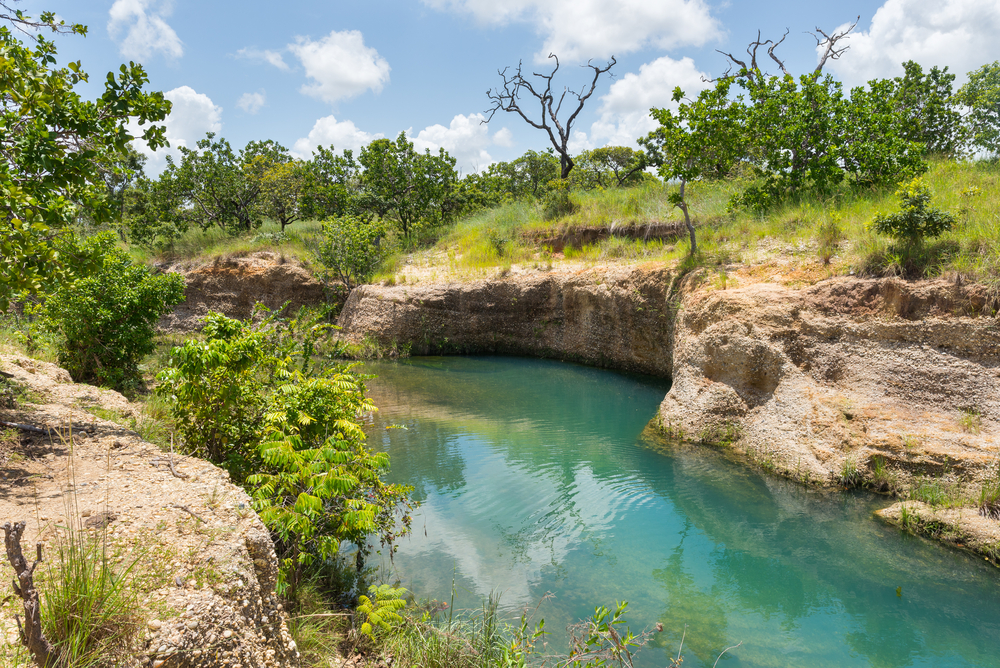Tirgua Overview
Tirgua National Park, known locally as Parque Nacional Tirgua, is a protected natural area in Venezuela, covering approximately 554 square miles (1,435 square kilometers).
Located in the states of Cojedes and Yaracuy, this park serves as a crucial conservation area for the region’s ecosystems, offering visitors a unique glimpse into Venezuela’s rich biodiversity and diverse landscapes. The park was established to preserve vital watersheds and is named after the Tirgua River, which flows through the area, supporting both wildlife and local communities.
The terrain of Tirgua National Park is characterized by rolling hills, lush valleys, and dense forests, creating a vibrant and varied landscape. The elevation varies, leading to a mix of different ecosystems, including cloud forests and tropical lowland rainforests.
The park is home to a mix of deciduous and evergreen vegetation, with trees such as ceibas, mahoganies, and kapoks towering over the landscape. The dense undergrowth supports a rich array of ferns, orchids, and bromeliads, making the park a haven for botanists and nature lovers.
Several rivers and streams crisscross the park, with the Tirgua River being the most significant, providing a crucial water source for both wildlife and human settlements nearby.
The park boasts an impressive variety of wildlife, with some of Venezuela’s most iconic species found within its boundaries. Mammals such as jaguars, pumas, ocelots, tapirs, and capybaras roam through the dense forests, while howler and capuchin monkeys are commonly heard calling from the treetops.
The avian diversity is remarkable, with species like scarlet macaws, toucans, crested guans, and the strikingly beautiful Andean cock-of-the-rock often spotted in the canopy.
Raptors such as black hawk-eagles and ornate hawk-eagles patrol the skies, while various species of hummingbirds and tanagers bring flashes of color to the foliage. The park’s waterways support a variety of amphibians and reptiles, including poison dart frogs and spectacled caimans.
Visitors to Tirgua National Park can explore its natural beauty in several ways. Hiking is one of the most popular activities, with trails winding through the forests and leading to scenic viewpoints. Birdwatching enthusiasts flock to the park to observe its rich avian life, while photographers can capture the park’s breathtaking scenery and elusive wildlife.
The rivers offer opportunities for freshwater fishing and relaxation along the banks, while eco-tourism initiatives are being developed to provide guided experiences that educate visitors about the park’s flora and fauna. Camping is also a popular option for those looking to immerse themselves fully in the park’s serene environment.
Conservation efforts in Tirgua National Park face challenges, particularly from deforestation, illegal hunting, and encroachment by agricultural activities. However, there have been notable successes in wildlife protection, with ongoing monitoring of key species and habitat restoration projects helping to maintain biodiversity.
Local and national authorities, along with conservation organizations, are working to implement sustainable tourism initiatives to promote environmental awareness and ensure the long-term preservation of the park. With its diverse ecosystems, rich wildlife, and scenic beauty, Tirgua National Park remains a vital natural treasure in Venezuela, offering both ecological significance and opportunities for adventure and discovery.















































































